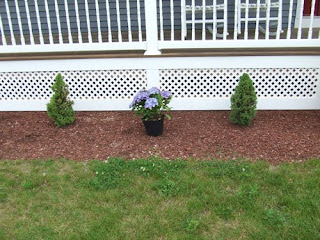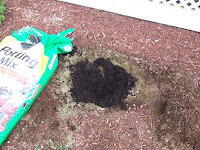How To Plant Hydrangea


The flowers can be white, blue, shades of pink and purple. The colors depend on the species and the acidity of the soil. My wife happens to love the blue ones and she’s in luck because blue ones require acidic soil and we have plenty of that! Hydrangeas like a mixture of sun

One of the best ways to layout plant locations is to place them around in their pots. You can try different locations and then mark your favorite spot before you dig the hole. You’ll want to dig the hole approximately twice the diameter of the pot that it’s in. Also dig the hole about twice the depth of the root ball. Once you’ve dug the hole I like to partially fill the hole with some really good potting soil. I happen to like the pre-bagged potting soils that have fertilizer in them already.

Next remove the plant from the pot and loosen the root ball. It’s easiest to just use your fingers to loosen up the roots so they will take in the new soil. When you place the plant into the hole make sure the top of the root ball is slightly above the surrounding grade. Next fill the remaining void around the root ball with additional potting soil. Make sure you pack it in to remove any voids. Finally water the plant liberally for a few days until the plant has a chance to take hold.
Recent Posts
Framing Stick Nailer vs Coil Nailer
Which is Better a Stick Nailer or Coil Nailer? Framers have many choices in nailers…
How Many Roofing Nails Per Square of Shingles
Estimating How Many Nails for a New Roof When it comes to estimating materials for…
Composite / PVC Decking – Layout Tips & Advice
Composite / PVC Decking Layout Tips and Advice Composite and PVC decking have really changed…
Benefits of an ERV System (Energy Recovery Ventilator)
Benefits of ERV Systems (Energy Recovery Ventilator) If you're building a new home or doing…
Vermiculite Attic Insulation Abatement
Vermiculite Attic Insulation If your home was built before 1990 there is a chance it…
Nuisance Tripping of AFCI (Arc Fault) Circuit Breakers
Arc Fault (AFCI) Circuit Breakers Tripping Often An arc-fault circuit interrupter (AFCI) or arc-fault detection…